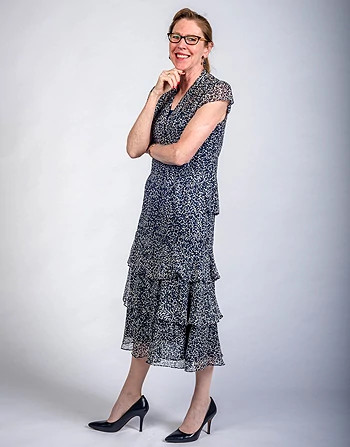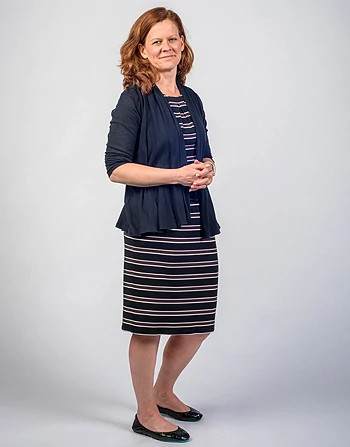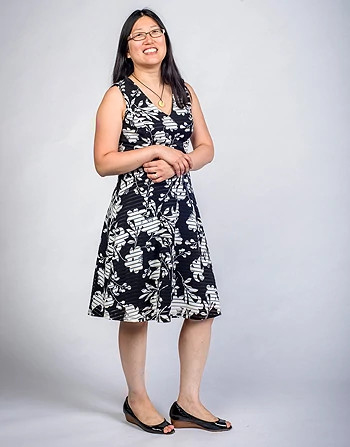Giving Back Through Patient Registries

From Turning Point 2018
By Kristin Baird Rattini
For many people, the word “registry” denotes a gift, selected from a list and bestowed for a wedding or baby’s birth. For the breast cancer program at the Susan F. Smith Center for Women’s Cancers, registries take on a far deeper meaning and more profound approach to giving.
Thanks to the generosity of thousands of patients who consent to share their treatment data and biological samples in patient registries, Dana-Farber investigators and clinicians can probe the genomics of breast cancer and understand the medical journeys of patients, so they can develop new approaches for the future.
In contrast to the laser-focused nature of clinical trials, registries take a broader view of what can be studied and discovered. "The development of cohorts allows you to follow patients with a given diagnosis over time and, from that sample, learn a great deal from their disease course and personal experiences," says Eric P. Winer, MD, chief of Breast Oncology, chief clinical strategy officer, and senior vice president for Medical Affairs. "We can pose an endless number of questions related to the biology of breast cancer, the impact of therapy, and the outcomes that our patients live with."

Uniting to Understand IBC
Established in 2010, the Inflammatory Breast Cancer (IBC) registry – only the second in the nation – has been vital to ongoing research into this rare form of breast cancer. "Historically, IBC has been included with non-IBC cancers in research studies," says Beth Overmoyer, MD, director of the IBC Program at the Susan F. Smith Center for Women's Cancers. "We want to look at the unique biology of this disease. The registry is vital to separate out IBC on its own and to determine some of the risk factors associated with the disease and what therapies are effective."
More than 480 patients so far have shared their clinical data and images with the registry. In addition, the registry has access to 73 fresh tumor specimens in the tumor bank and is in the process of identifying all of the stored IBC specimens centralized there. Those resources from the IBC registry enabled Dr. Overmoyer to look at the outcomes for IBC patients who received PET scans at the time of diagnosis. "PET/CT imaging is not routinely used for newly diagnosed breast cancer in general," she explains. "But these scans provide vital information in accurately staging IBC. We found that it demonstrated advanced IBC not seen by other imaging tests, and the information from PET/CT imaging also changed the radiation planning."
Registry tissue samples also were used to identify a key pathway – Jak2, STAT3 – that is especially active in IBC. In the lab, Kornelia Polyak, MD, PhD, a basic scientist at Dana-Farber, was able to suppress the pathway using the drug ruxolitinib. "Her discovery allows us to bring this research forward," says Dr. Overmoyer. "We are now spearheading a multi-institutional pre-operative clinical trial using this medication in triple negative IBC. It is exciting to see this ‘bench-to-bedside' process succeed because of patient participation in our IBC registry."
Dr. Overmoyer is also excited to be transforming the registry from retrospective to prospective – a registry that will actively add new patients. Going forward, it will be called UNITE – Understanding Inflammatory Breast Cancer through Exploration. "We explain to patients that, by participating, they are automatically contributing to the next generation of efforts to eradicate this disease," Dr. Overmoyer says.

Decision-Making for Young Women with Breast Cancer
Launched in 2006, Helping Ourselves, Helping Others: The Young Women's Breast Cancer Study, focuses on women age 40 or younger at the time of their diagnosis. "We knew there were things unique to being young, or accentuated by being young, that made it harder for our younger patients both physically and emotionally," says Ann Partridge, MD, MPH, founder and director, Program for Young Women with Breast Cancer.
To date, 1,302 patients have enrolled, with 98 percent consenting to tumor specimen collection and 91 percent giving blood draws. "When our colleagues hear our participation rates, they ask, ‘How have you done it?'" Dr. Partridge says. "Our patients are really engaged and want to learn not only for other future young women but for themselves."
Among her many findings, Dr. Partridge discovered a strong need for patient education about contralateral prophylactic mastectomy (when a woman opts to have both breasts removed when a tumor is found in only one). Many patients decided on their own—without working with their physician—to have the surgery performed for their peace of mind. "We're piloting a study of a decision support tool to help women make that surgical decision, understand the risks and address their concerns in an informed manner," Dr. Partridge says.
She also learned that fertility was a primary factor in treatment decisions for about 40 percent of the cohort and remained a prominent consideration for three years into survivorship. "We now know that we need to address the topic of fertility immediately at diagnosis," she says. "Survivorship begins right away for this critical issue for some young women."

How Does Metastatic Breast Cancer Evolve?
Short for Ending Metastatic Breast Cancer for Everyone, the EMBRACE study was established in 2010 by Nancy Lin, MD. Since then, nearly 2,100 patients have registered and shared their treatment information.
"Our bodies contain a wealth of information. Why not use it?" says Lianne Kraemer, an EMBRACE study participant from Chicago. "If there is anything I can do to expand the knowledge of this disease, I want to participate."
Approximately two-thirds of EMBRACE participants have provided at least a baseline blood sample for future study, while many others – such as Kraemer – contribute blood samples quarterly and if their condition worsens.
"We know that when cancer becomes recurrent, changes happen in the tumors," Dr. Lin explains. "These changes continue to occur over time. In order to study these modifications, we need samples collected at various points in time. By doing so, we're hoping we can identify reasons why the cancer has become resistant to treatment."
Samples from the EMBRACE registry have underpinned recent research into liquid biopsies, which screen blood samples for biomarkers of cancer shed by tumors and analyze tumor DNA in blood. (See "Ask an Expert" on pages 4-5.) They are now being studied to understand how tumors change over time, how they escape common breast cancer treatments, and how they might also offer a way to measure the effect of treatments on breast cancer and survival.
Dr. Lin next plans to use the same approach to analyze samples from HER2 positive participants— both those who have been on Herceptin only for a long time and whose cancer is still under control, and those whose disease has worsened on various HER2-based treatments.
Exploring Treatment Resistance in TNBC
A comprehensive triple-negative breast cancer cohort launched in the summer of 2018 under the direction of Eric P. Winer, MD. Funded with a gift from the Benderson Family, the cohort aims to recruit 500 triple-negative breast cancer (TNBC) patients from the Longwood Medical Area and network partners in the Dana-Farber Cancer Care Collaborative. "This wider circle will provide the cohort a much more diverse population," says Dr. Winer. Ana Garrido-Castro, MD, one of the center's international fellows, has played a key role in the project, as has Nancy Lin, MD, clinical director, Breast Oncology.
The cohort's mission is to increase understanding of treatment resistance, which is quite common in triple-negative breast cancer. "TNBC accounts for a disproportionate degree of mortality from breast cancer," Dr. Winer explains. "Much of that is due to resistance to standard therapies. What we are trying to do with the cohort is to follow a population of patients over time to collect demographic information, treatment information, tumor tissues and blood samples so that we can better understand which patients are resistant and which are more sensitive to treatment."
Request a Publication
Receive by mail the current issue of a Dana-Farber publication by completing this request form.
Media Contacts
If you are a journalist and have a question about any of our stories or need more information, email media@dfci.harvard.edu or call 617-632-4090 and ask to speak to a member of the media team.
The Media Team cannot respond to patient inquiries. For more information on contacting Dana-Farber, please see Contact Us.